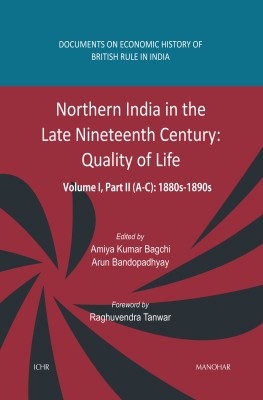Northern India in the Late Nineteenth Century: Quality of Life, Volume I, Part II (A, B, C): 1880s-1890s(Hardcover, Amiya Kumar Bagchi, Arun Bandopadhyay (eds.))
Quick Overview
Product Price Comparison
This volume is part of the collaborative project of the Indian Council of Historical Research (ICHR) and Institute of Development Studies Kolkata (IDSK) on documents pertaining to economic history and quality of life in Northern India in the late nineteenth century. The present volume (divided into three parts, A, B, and C) roughly covers the broad period of the 1880s and 1890s. Northern India here means what was generally known as the North-Western Provinces (NWP), and the province of Oudh (till 1877, after which it was merged with the NWP) in the late nineteenth century, excluding the Punjab province. Documents included in this volume focus on a wide spectrum of human activities in northern India. They are materials from diverse fields, such as agriculture, forestry, population, public health, jails, education and sanitation, in each of which the British Raj was involved in collecting information and directing the courses of development in more than one sense. These documents touch on various kinds of agricultural knowledge such as agricultural operations, agricultural technologies, manure, and material conditions of agricultural classes, population change, health and mortality, literacy and primary education, values of livestock and cattle diseases, production and export of cash crops, production and supply of food grains, distribution of waste lands, forests and reclamation of jungle lands, operation of income tax, human disease and mortality, and scarcity and famines. A section on the report of native newspapers has been added to evaluate the responses of educated Indians on some of these developments. Other reports include ones on agricultural improvements, public works and veterinary developmentsTouching on a number of crucial aspects of material conditions and quality of life of people in Northern India in the last quarter of the nineteenth century, the volume stands as a valuable source book for the students of both economic and social history, and of human development in India as well.


